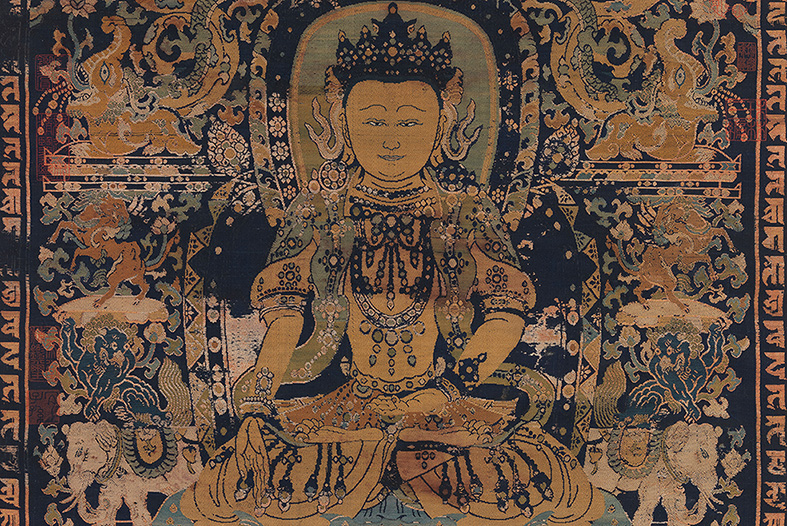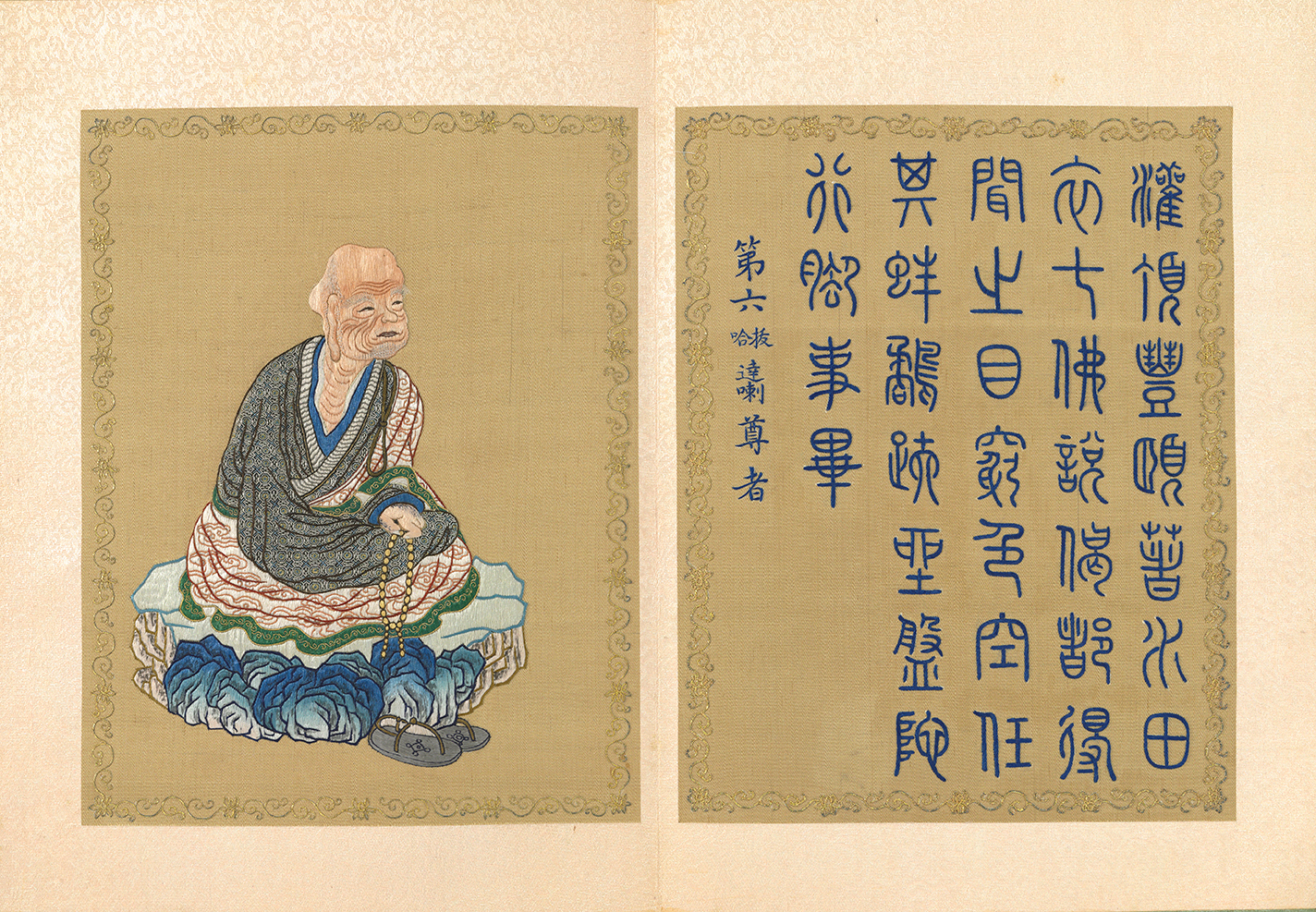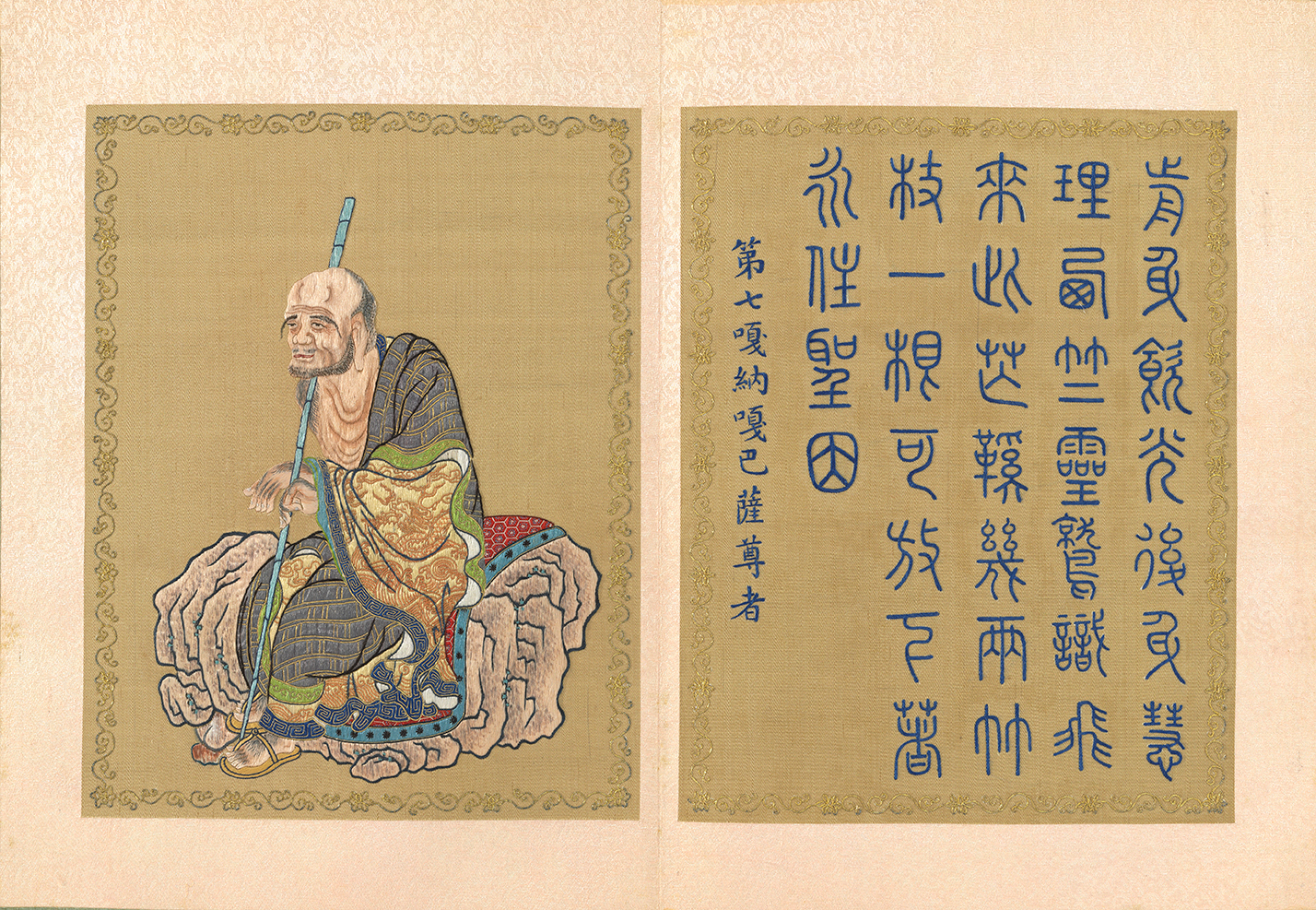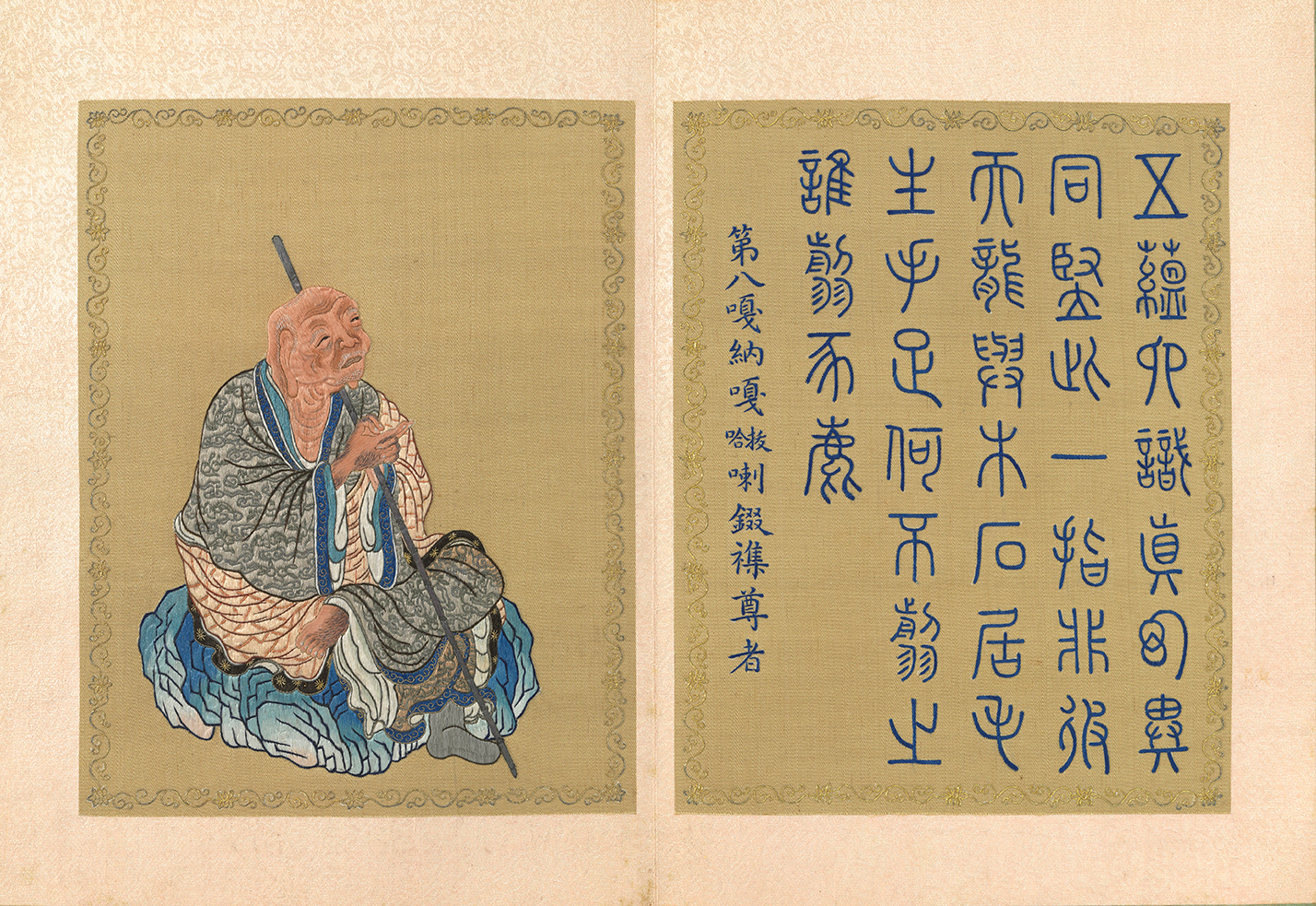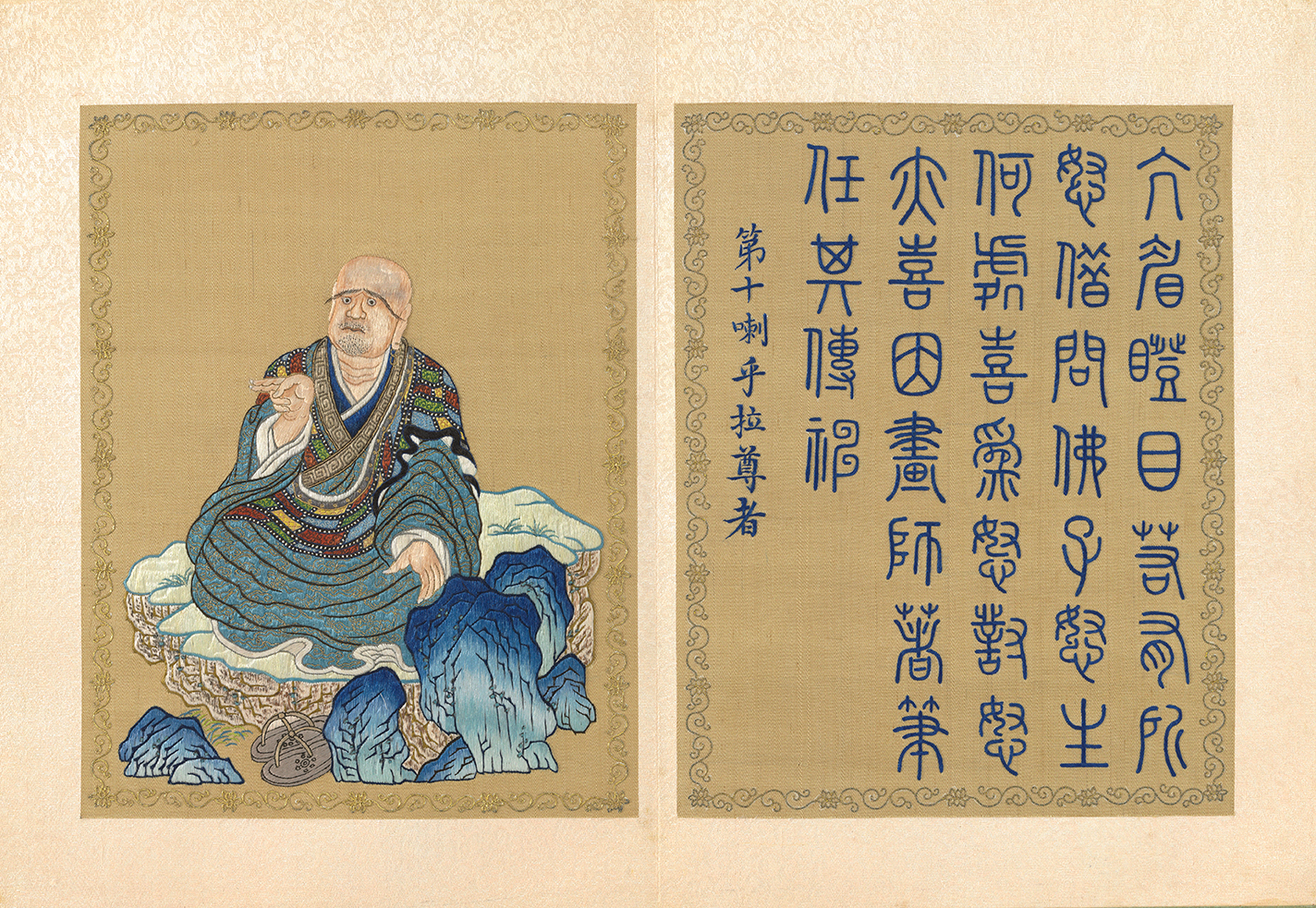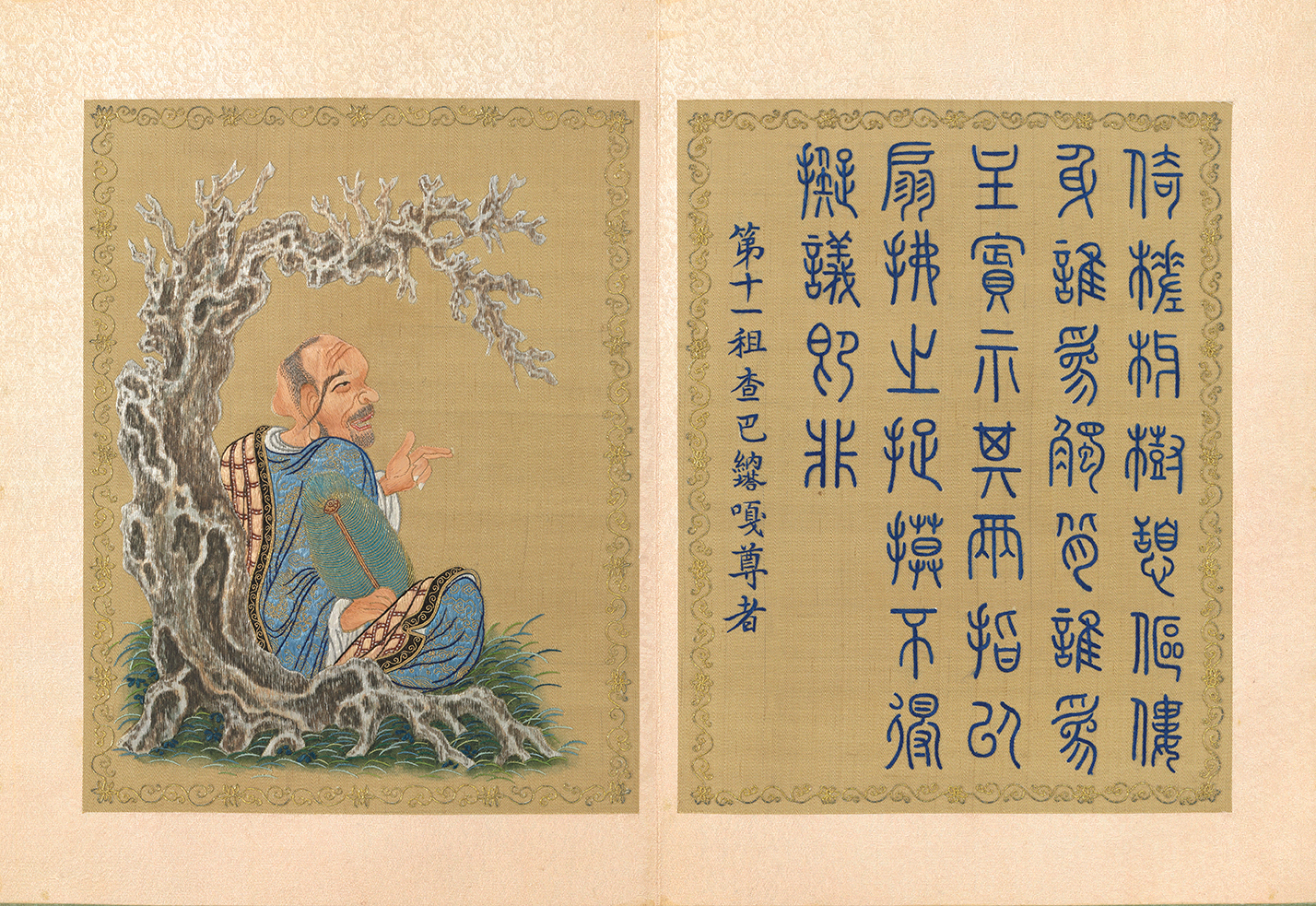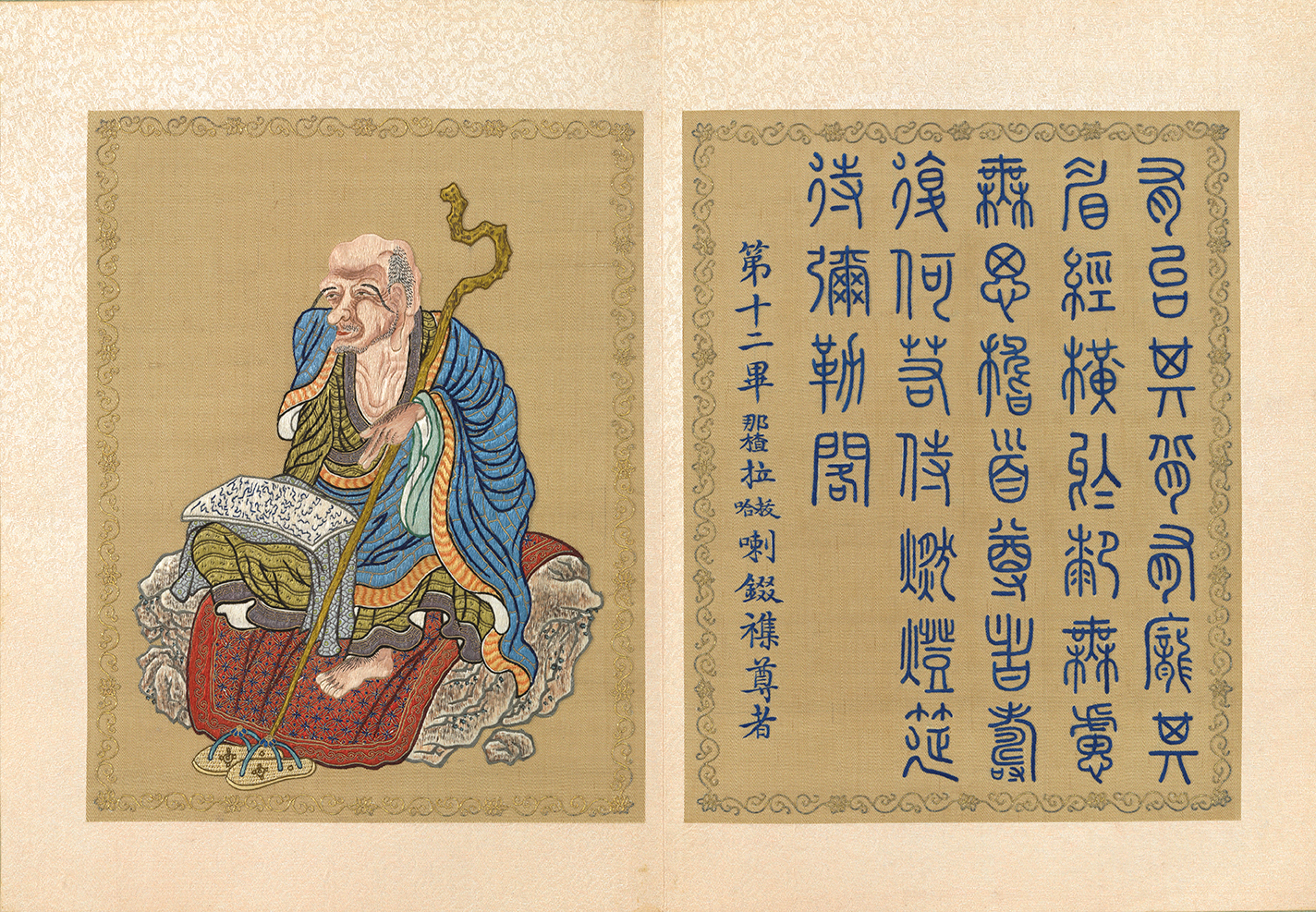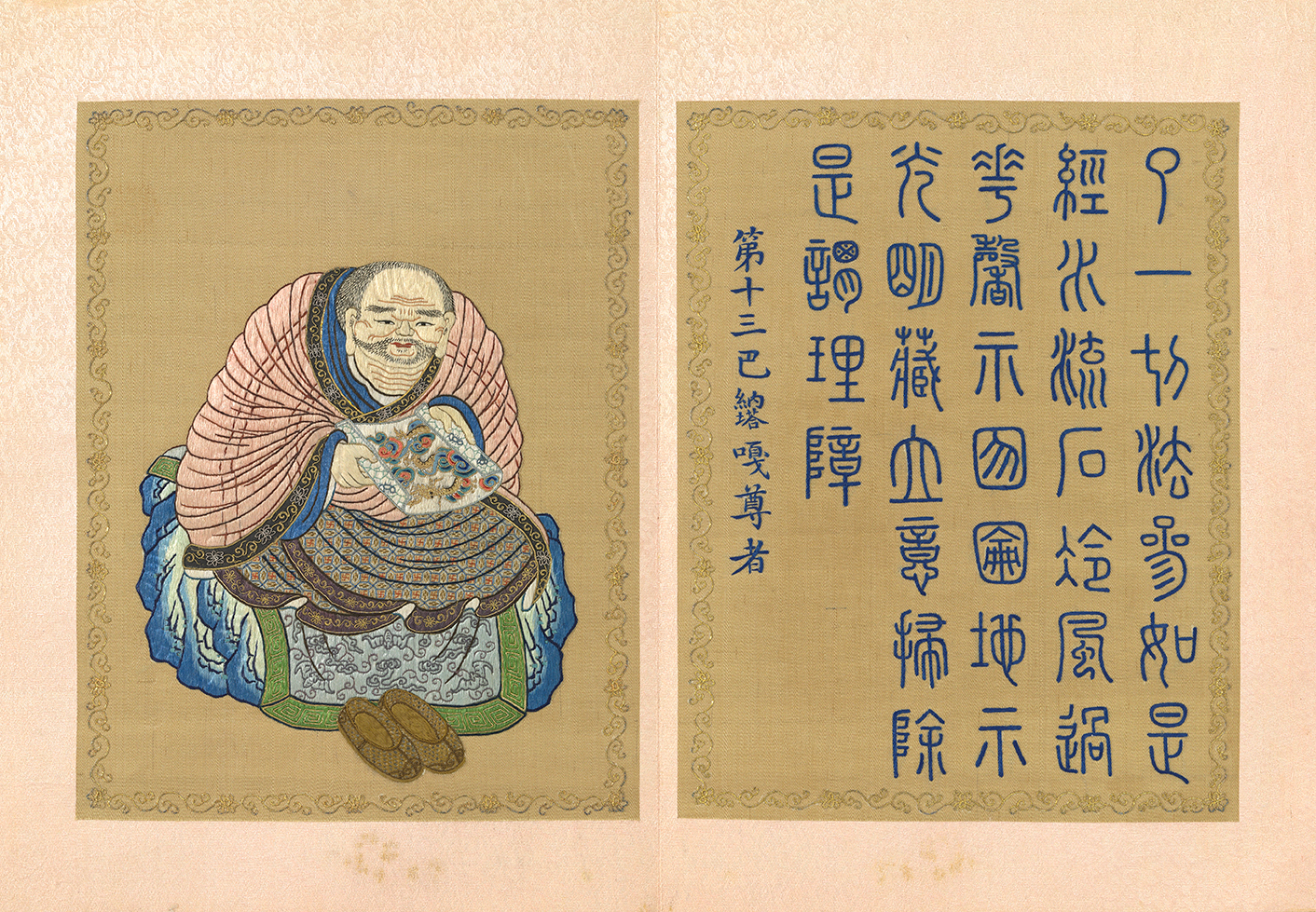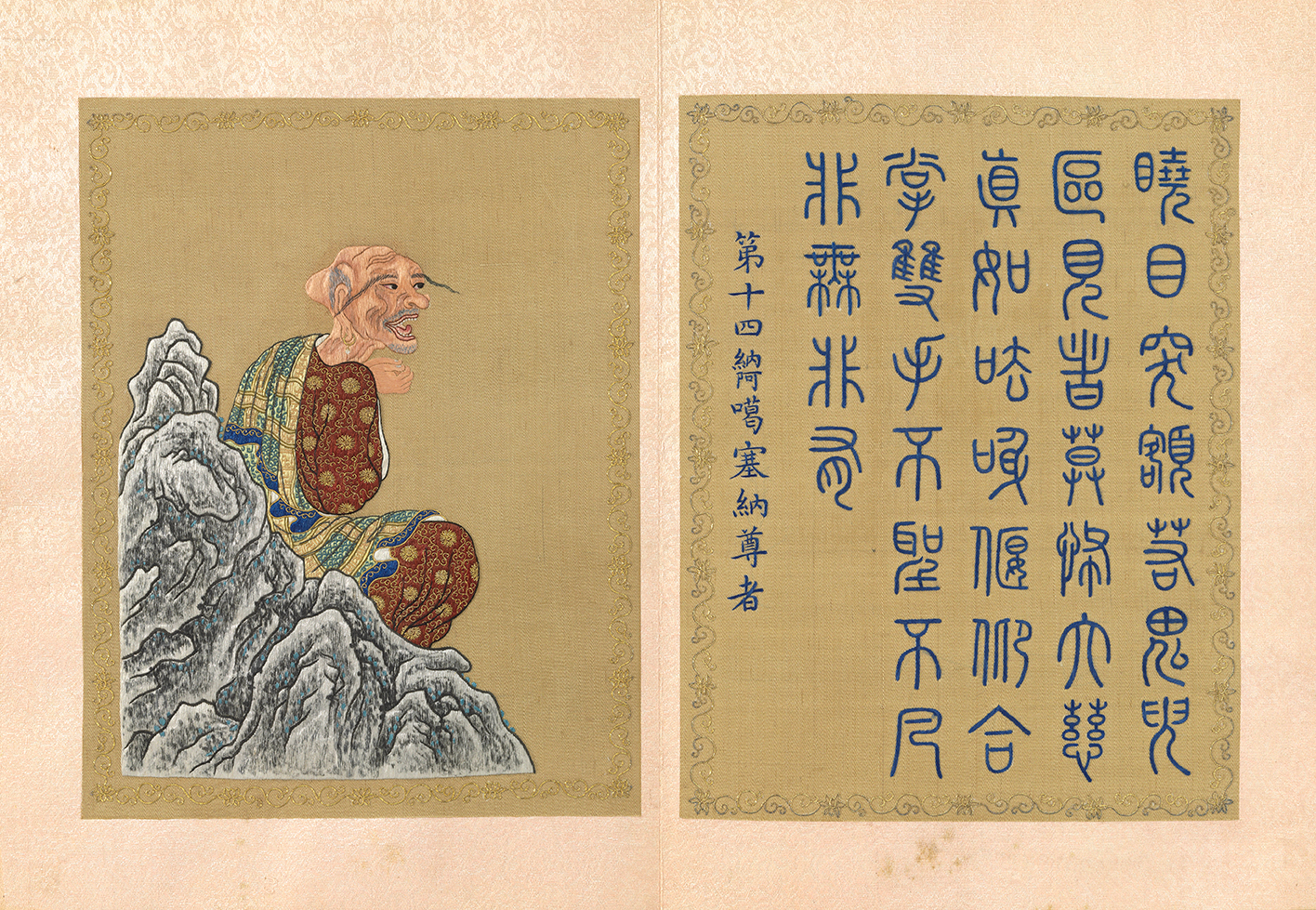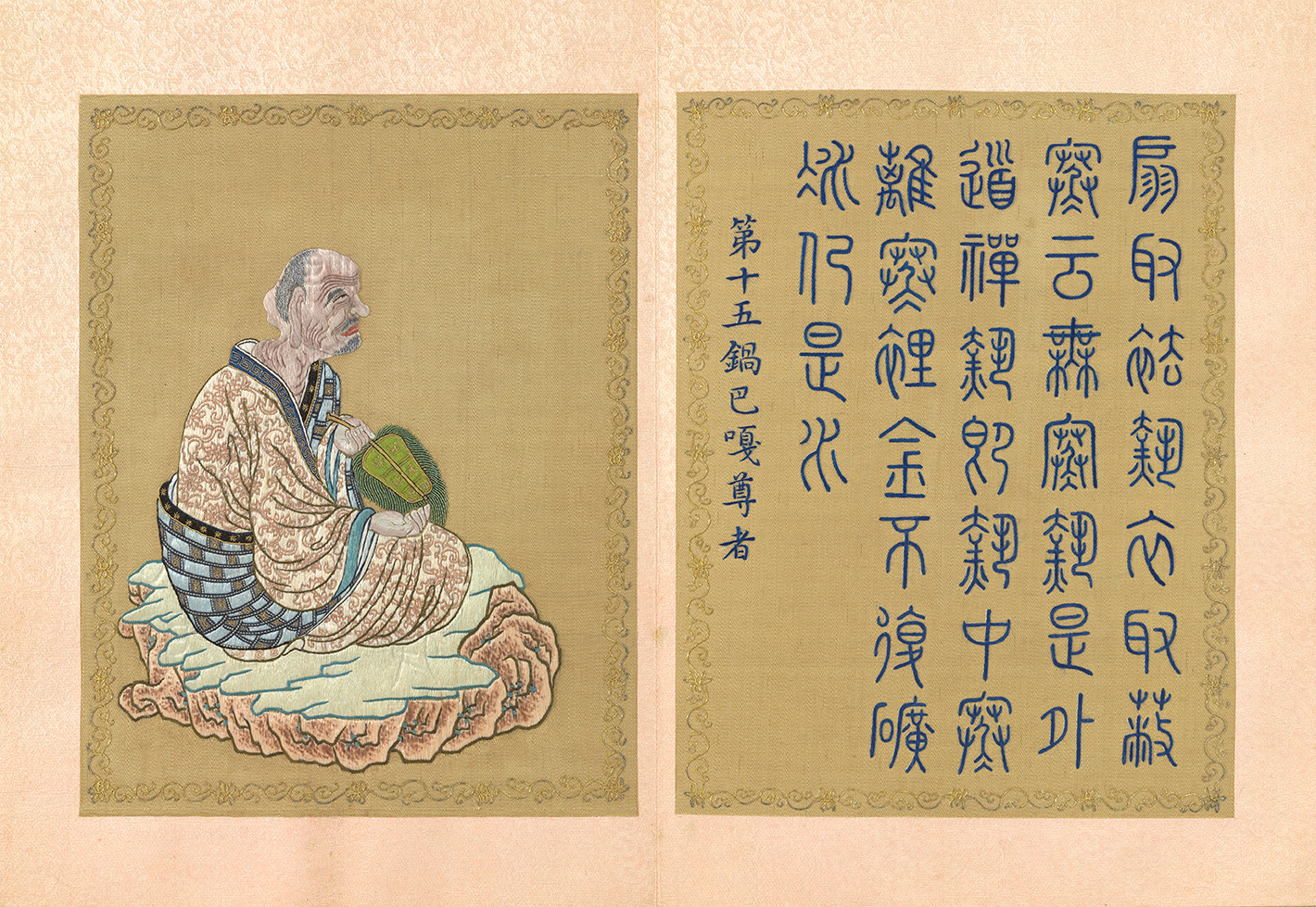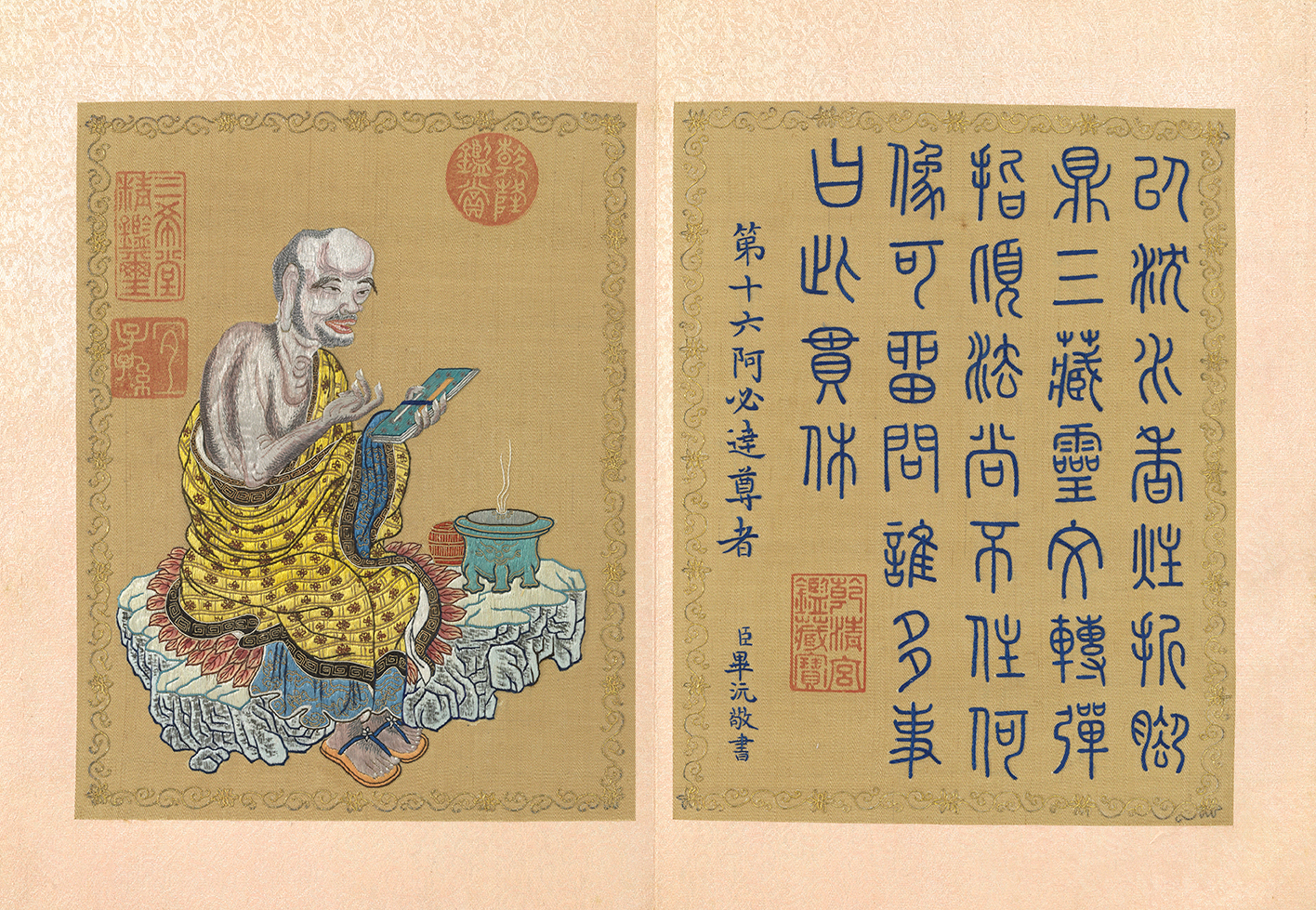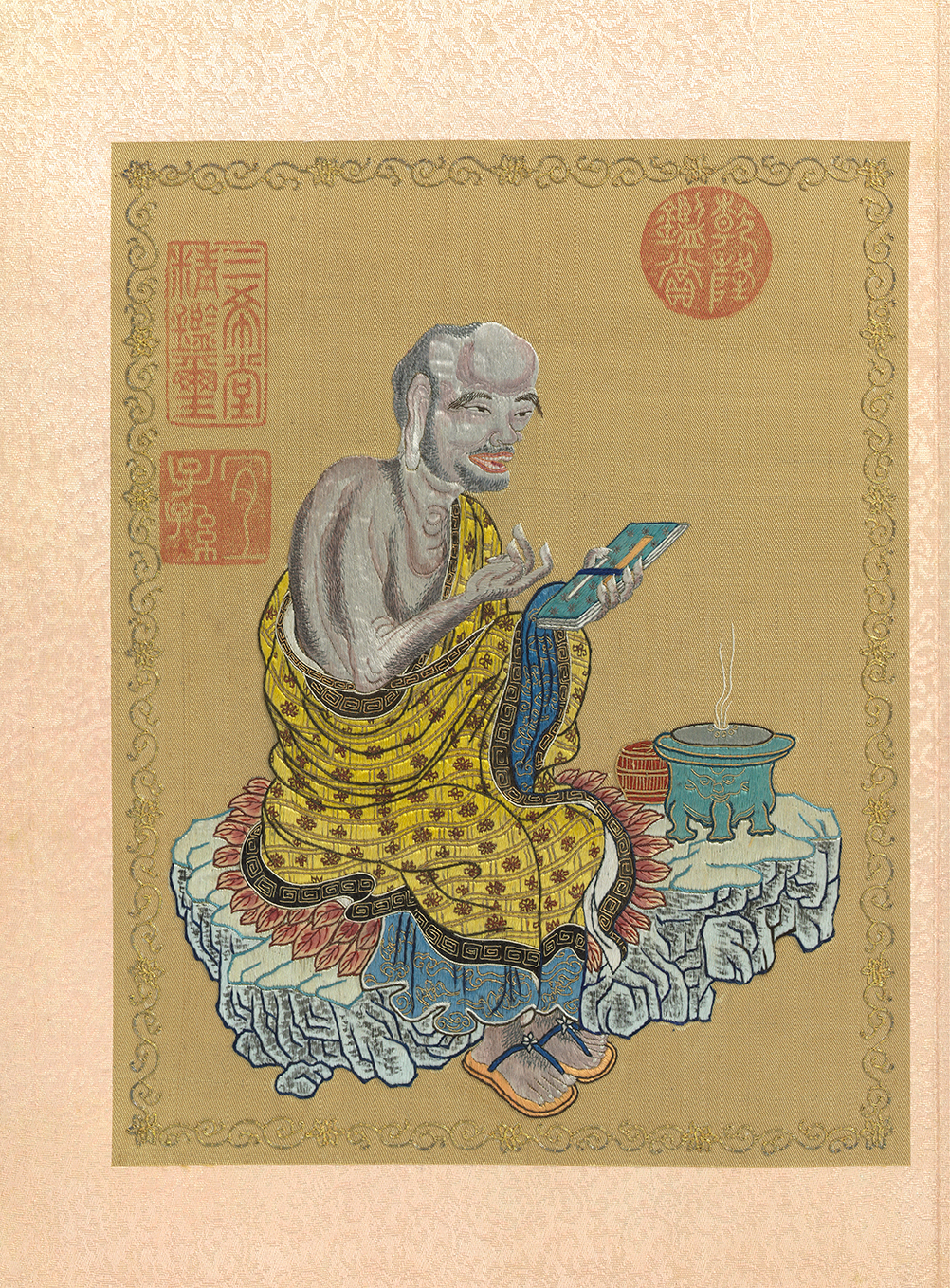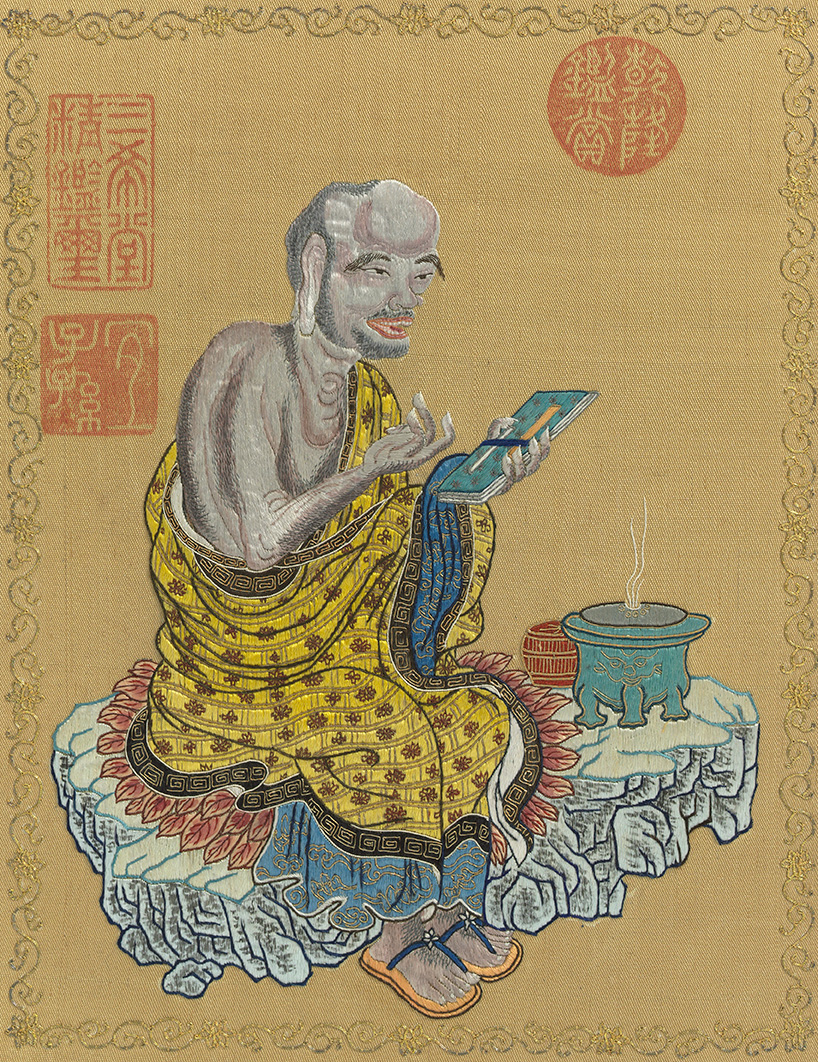Buddhist and Daoist Figures
Weaving both tapestry and embroidery is an extremely delicate and difficult process, the methods involved being exceptionally artistic as well, which means that the maker must have both consummate skill and aesthetic cultivation. The inherent beauty of silk threads, their arrangement requiring considerable forethought, and the range of opulent colors have always made such works highly appreciated. During the Southern Song period, Buddhist and Daoist subjects gradually became part of the oeuvre in tapestry and embroidery. Buddha and bodhisattva figures in the Song dynasty tend to be more secular and approachable, presenting deities solemn yet personable for a gorgeous classical manner. Silk textiles on the subject of Buddhist and Daoist figures correspondingly come in a wide variety, from grand scenes of Buddhist teachings to such popular subjects as the Eight Immortals offering blessings for longevity. They not only manifest devotion of the faithful but also sincere wishes for health and good fortune, making them ideal presents or birthday gifts.
Ratnasambhava Buddha
- Anonymous, Song dynasty (960-1279)
- Hanging scroll, silk tapestry
This weaving made in the brocade method differs from other typical silk tapestries. Though some of the patterning has been damaged, it nonetheless retains the original dark-blue brocade background. The weft also has traces of gold threads, indicating the different methods of weaving employed in its production.
Ratnasambhava is the Buddha of the South among the five directional buddhas. This buddha is generally shown with the right hand exposing the palm in the grant-wishing (varada) mudra and the left hand holding robes, the body mostly in yellow and on a treasure horse. The figure here, however, is seated on a lotus Sumeru pedestal throne and surrounded by auspicious creatures of the Buddhist pantheon for decoration, including the gold-winged bird (garuda), dragon maiden (nagakanya), elephant, flying horse, and capricorn fish (makara). This work relates to Buddhist art of the fourteenth to fifteenth century.
The Sixteen Lohans and Eulogies after Bi Yuan
- Anonymous, Qing dynasty (1644-1911)
- Album leaf, silk embroidery, 21.8 x 17.1 cm
After seeing Guan Xiu's depictions of the sixteen lohans at Shengyin Temple by West Lake during a southern inspection tour, the Qianlong emperor consulted various materials and presented a new order and names for them, which often became the basic information for this subject reproduced in different mediums. This album features the sixteen lohans in embroidery. The figures' clothing and hair are done in plain embroidery, the technique involved quite ingenious. The faces, tree trunks, and rocks all include additions of color washes added by brush after the embroidery was done, the colors bright in a rich visual effect.
Bi Yuan (1730-1797), whose clerical-script calligraphy was embroidered in the opposing leaves as well, was a Presented Scholar of the Qianlong reign who rose in officialdom to the post of Viceroy of Huguang.

